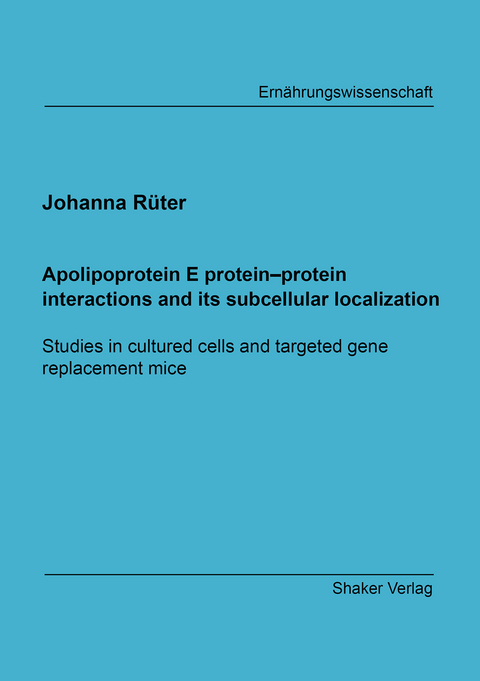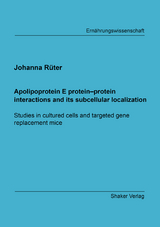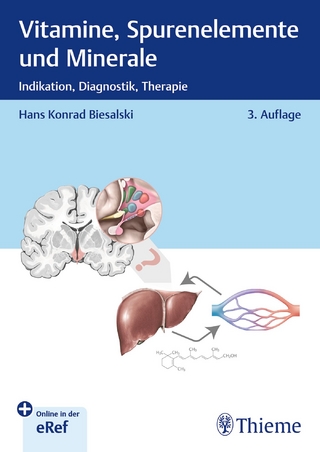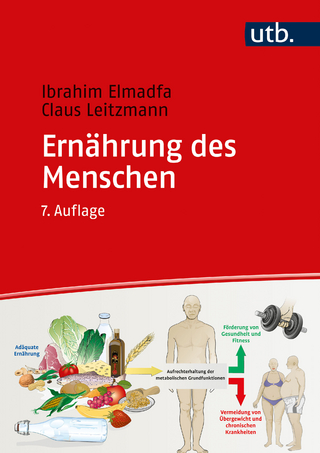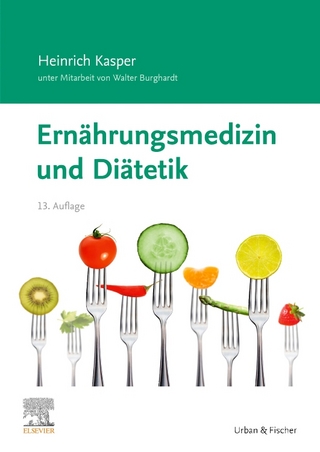Apolipoprotein E protein–protein interactions and its subcellular localization
Studies in cultured cells and targeted gene replacement mice
Seiten
Human apolipoprotein E (APOE), originally known for its role in lipid metabolism, is polymorphic with three major allele forms APOEε2, APOEε3, and APOEε4 leading to three different human APOE isoforms. The ε4 allele is a genetic risk factor for Alzheimer's disease (AD), therefore the vast majority of APOE research is focused on its role in AD pathology. In addition, there is increasing evidence for other functions of APOE through the involvement of APOE in biological processes such as transcriptional regulation, mitochondrial metabolism, immune response, and responsiveness to dietary factors. The aim of this work was to identify potential novel functions of human APOE and to reveal previously unknown pathways in which APOE is involved. For this purpose, APOE protein–protein interactions, the subcellular localization of APOE, and epigenetic aspects of the APOE gene were studied in vitro in APOE-transfected hepatocytes and in vivo in APOE targeted gene replacement (TR) mice.
APOE co-immunoprecipitation (co-IP) studies in the liver of APOE TR mice have identified over 300 proteins potentially associated with APOE. The three most promising candidates, all of which are mitochondrial proteins, branched-chain alpha-keto acid dehydrogenase subunit α (BCKDHA), voltage-dependent anion-selective channel 1 (VDAC1), and ATP synthase subunit β (ATP5B), were included in further functional studies and the interaction of APOE with these proteins was examined for APOE isoform-dependent differences, the influence of dietary restriction (DR), and the significance of these interactions on downstream pathways. DR led to an increase in APOE protein–protein interactions, most pronounced in VDAC1, compared to ad libitum (AL) feeding, suggesting a potential function of APOE in energy metabolism. In the interaction of APOE with VDAC1 and ATP5B, partial differences were found between APOE3 and APOE4, but the ATP levels were unchanged, arguing against an interference of ATP synthesis or translocation by the interaction with APOE. Since BCKDHA is involved in the breakdown of branched-chain amino acids (BCAA), the enzyme activity of the BCKD complex was measured. The activity was significantly increased in APOE4 despite the comparable BCKDHA–APOE interaction in AL-fed APOE3 and APOE4 mice. However, protein expression of BCAA catabolism proteins and plasma BCAA level were not altered isoform-dependently.
The VDAC1–APOE interaction indicates a possible role of APOE in mitochondria-associated ER membranes (MAMs), since VDAC1 itself is localized there. Isolation of pure subcellular fractions from Huh7 cells showed a fourfold enrichment of APOE in the MAM fractions compared with whole cell fractions. Accumulation in MAMs was comparable in APOE3 and APOE4, as was the expression of MAM marker proteins. The number of contacts between ER and mitochondria was examined by proximity ligation assay (PLA) and revealed no isoform-dependent differences, which in summary suggests no APOE isoform effect on hepatic MAMs.
The APOE alleles differ in only one and two bases, respectively, resulting in APOEε4 having the most cytosine residues. Analysis of APOE DNA methylation revealed allele-dependent differential methylation at single nucleotide polymorphism (SNP) sites in the hippocampus, with APOEε4 showing a higher degree of methylation due to its higher cytosine content, followed by APOEε3 and APOEε2. Chromatin immunoprecipitation (ChIP) was performed to examine the binding of methyl-CpG binding protein 2 (MECP2) to APOE DNA. It was found that MECP2 was in trend less associated to APOEε4, compared to APOEε3, despite the higher methylation in APOEε4. However, APOE protein expression was not altered, which rather argues against transcriptional regulation or alternative splicing by methylation or MECP2 binding.
Overall, the present work provides further evidence that APOE plays a role in mitochondrial and MAM metabolism through interaction with proteins relevant to mitochondrial energy metabolism and the accumulation of APOE in MAMs. However, the APOE isoform barely influences these processes in the liver. Both, the modulation of APOE protein–protein interactions by DR and the APOE isoform-dependent regulation of BCKD activity highlight the relevance of APOE in a nutritional context. In addition, APOE variation affects epigenetic changes in the APOE gene.
APOE co-immunoprecipitation (co-IP) studies in the liver of APOE TR mice have identified over 300 proteins potentially associated with APOE. The three most promising candidates, all of which are mitochondrial proteins, branched-chain alpha-keto acid dehydrogenase subunit α (BCKDHA), voltage-dependent anion-selective channel 1 (VDAC1), and ATP synthase subunit β (ATP5B), were included in further functional studies and the interaction of APOE with these proteins was examined for APOE isoform-dependent differences, the influence of dietary restriction (DR), and the significance of these interactions on downstream pathways. DR led to an increase in APOE protein–protein interactions, most pronounced in VDAC1, compared to ad libitum (AL) feeding, suggesting a potential function of APOE in energy metabolism. In the interaction of APOE with VDAC1 and ATP5B, partial differences were found between APOE3 and APOE4, but the ATP levels were unchanged, arguing against an interference of ATP synthesis or translocation by the interaction with APOE. Since BCKDHA is involved in the breakdown of branched-chain amino acids (BCAA), the enzyme activity of the BCKD complex was measured. The activity was significantly increased in APOE4 despite the comparable BCKDHA–APOE interaction in AL-fed APOE3 and APOE4 mice. However, protein expression of BCAA catabolism proteins and plasma BCAA level were not altered isoform-dependently.
The VDAC1–APOE interaction indicates a possible role of APOE in mitochondria-associated ER membranes (MAMs), since VDAC1 itself is localized there. Isolation of pure subcellular fractions from Huh7 cells showed a fourfold enrichment of APOE in the MAM fractions compared with whole cell fractions. Accumulation in MAMs was comparable in APOE3 and APOE4, as was the expression of MAM marker proteins. The number of contacts between ER and mitochondria was examined by proximity ligation assay (PLA) and revealed no isoform-dependent differences, which in summary suggests no APOE isoform effect on hepatic MAMs.
The APOE alleles differ in only one and two bases, respectively, resulting in APOEε4 having the most cytosine residues. Analysis of APOE DNA methylation revealed allele-dependent differential methylation at single nucleotide polymorphism (SNP) sites in the hippocampus, with APOEε4 showing a higher degree of methylation due to its higher cytosine content, followed by APOEε3 and APOEε2. Chromatin immunoprecipitation (ChIP) was performed to examine the binding of methyl-CpG binding protein 2 (MECP2) to APOE DNA. It was found that MECP2 was in trend less associated to APOEε4, compared to APOEε3, despite the higher methylation in APOEε4. However, APOE protein expression was not altered, which rather argues against transcriptional regulation or alternative splicing by methylation or MECP2 binding.
Overall, the present work provides further evidence that APOE plays a role in mitochondrial and MAM metabolism through interaction with proteins relevant to mitochondrial energy metabolism and the accumulation of APOE in MAMs. However, the APOE isoform barely influences these processes in the liver. Both, the modulation of APOE protein–protein interactions by DR and the APOE isoform-dependent regulation of BCKD activity highlight the relevance of APOE in a nutritional context. In addition, APOE variation affects epigenetic changes in the APOE gene.
| Erscheinungsdatum | 18.04.2023 |
|---|---|
| Reihe/Serie | Berichte aus der Ernährungswissenschaft |
| Verlagsort | Düren |
| Sprache | englisch |
| Maße | 148 x 210 mm |
| Gewicht | 241 g |
| Themenwelt | Medizin / Pharmazie ► Gesundheitsfachberufe ► Diätassistenz / Ernährungsberatung |
| Weitere Fachgebiete ► Land- / Forstwirtschaft / Fischerei | |
| Schlagworte | APOE • epigenetics • interactome • mitochondria-associated ER membranes • mitochondrial function • Protein–protein interactions |
| ISBN-10 | 3-8440-9038-X / 384409038X |
| ISBN-13 | 978-3-8440-9038-3 / 9783844090383 |
| Zustand | Neuware |
| Informationen gemäß Produktsicherheitsverordnung (GPSR) | |
| Haben Sie eine Frage zum Produkt? |
Mehr entdecken
aus dem Bereich
aus dem Bereich
Indikation, Diagnostik, Therapie
Buch (2024)
Thieme (Verlag)
80,00 €
Unter Mitarbeit von Walter Burghardt
Buch | Softcover (2020)
Urban & Fischer in Elsevier (Verlag)
56,00 €
